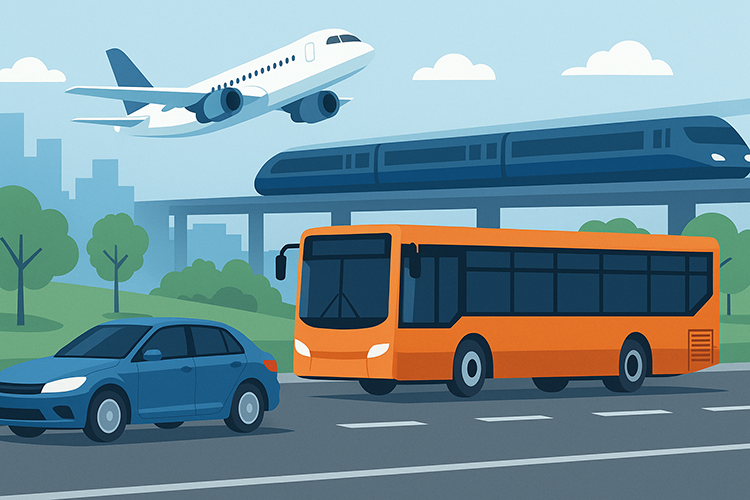2025-09-16
indicators

Cars remained the primary mode of passenger transport in the EU in 2023, accounting for 70.6% of total passenger-kilometres, down 1.8 percentage points from 2022. Air transport’s share increased to 14.7% (+1.6 pp), followed by buses/coaches/trolleybuses at 7.2% (−0.2 pp), rail at 7.1% (+0.3 pp) and sea at 0.4% (unchanged), according to Eurostat’s latest “EU people on the move” update. Country patterns varied widely: car use was highest in Lithuania (85.7%), the Netherlands (77.1%) and Finland (76.4); the air share peaked in Croatia (43.5%), Bulgaria (29.0%) and Cyprus (27.4%); buses were most prominent in Malta (15.8%), Ireland (15.4%) and Estonia (12.0%); rail’s role was largest in the Netherlands (10.9%), Austria (10.5%) and France (9.1%); and sea transport led in Croatia (2.4%), Estonia (2.3%) and Finland (2.1%).  Eurostat’s modal-split figures reflect shares of total passenger-kilometres rather than absolute volumes, meaning a rising share for one mode can coincide with growth in others. Complementary datasets indicate strong rebounds in the modes most affected by the pandemic: EU air passengers rose to 973 million in 2023, up 19.3% year on year, while rail passenger-kilometres reached a series high of 429 billion in 2023, up 11.2% from 2022. Both trends help explain the modest decline in the car share despite cars remaining dominant.  Longer-term indicators suggest Europe’s modal mix changes slowly. The European Environment Agency notes that total passenger activity returned to around pre-COVID levels by 2022, while the car share has shifted only marginally over the past few decades outside the pandemic shock. With 2024 and 2025 releases continuing to show robust air traffic and resilient rail demand, policymakers marking European Mobility Week are likely to focus on managing growth in higher-emission modes while sustaining momentum in rail and public transport.

